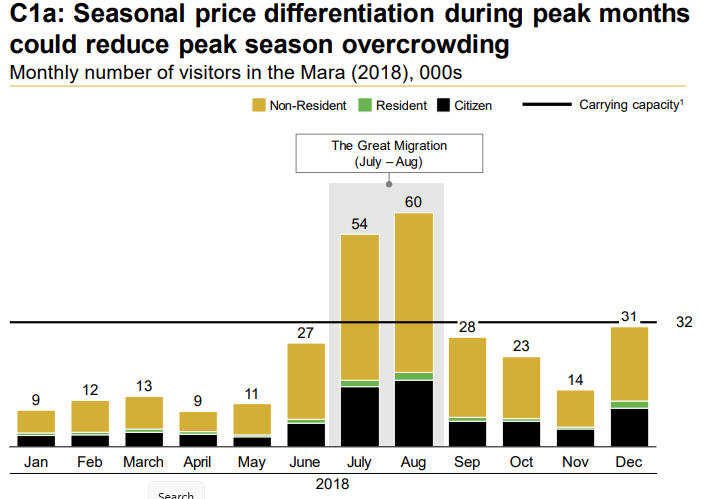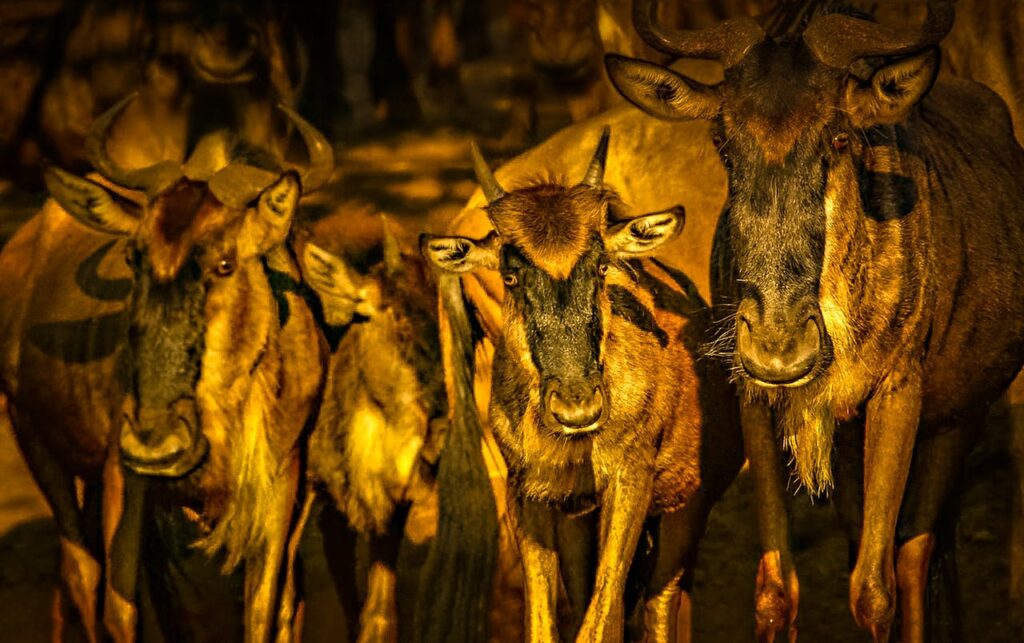So, Why is Masai Mara So Expensive?
The Masai Mara is expensive due to a combination of high park entry fees, costly accommodation, and essential conservation-related expenses. Recent fee increases doubled non-resident rates to USD 200 in peak season, with ticket validity reduced from 24 to 12 hours, effectively doubling daily costs.
Accommodation prices are driven by exclusive locations within the reserve and conservancies, offering close wildlife encounters, with high operational costs due to the remote, semi-arid environment. Additionally, bed-levy fees, conservation charges, and payments to Maasai landowners (KES 500–1,000 per guest) further inflate lodging costs. Many lodges cater to high-end international tourists, prioritizing luxury experiences, while revenue supports anti-poaching efforts, habitat restoration, and community development, making Masai Mara not just a safari destination but a critical pillar for conservation and sustainable tourism.
The Masai Mara is one of the world’s most iconic safari destinations, offering breathtaking landscapes and unmatched wildlife encounters. However, experiencing its wonders comes at a premium cost. This is not just about luxury; several key factors contribute to the high price of a Masai Mara safari. Here’s why.
Key Reasons Why Masai Mara is Pricey
1. High Entry Fees
One of the primary reasons Masai Mara safaris are expensive is due to the high park entry fees, which have seen a significant increase as of July 1, 2024. For non-residents, fees have doubled from USD 100 to USD 200 during the peak season (July–December) and increased from USD 80 to USD 100 in the green season (January–June). What makes this even more costly is the reduction in ticket validity from 24 hours to just 12 hours. This means that visitors now need to purchase two tickets to enjoy a full day in the park, effectively doubling the cost.
These changes aren’t arbitrary—they are part of a strategic move under the Masai Mara Management Plan (2023–2032) to combat the negative effects of overtourism, which has led to habitat degradation, disturbance of wildlife behavior, and pressure on natural resources. The goal of these higher fees is to regulate visitor numbers while generating more revenue for critical conservation efforts such as anti-poaching programs, habitat restoration, and community development initiatives.

While the Narok County Assembly approved an increase that was less than the fourfold rise initially recommended by Ministry of Tourism, the current fees still represent a significant adjustment aimed at ensuring the Mara’s long-term sustainability.
2. Expensive Accommodation
Another major contributor to the high cost of a Masai Mara safari is the expensive accommodation. Lodges and camps within the reserve, in private conservancies, and near main gates charge premium prices due to their exclusive locations. Guests are not just paying for a room; they are paying for the privilege of staying in the heart of nature, where wildlife roams freely just outside their tents or rooms.
The closer the accommodation is to prime wildlife areas, the higher the cost, as these locations offer unmatched convenience and immersive safari experiences. Additionally, many camps and lodges have been designed to cater to high-end international tourists from Europe, Asia, and the Americas, who are willing to pay top dollar for luxury services. While budget-friendly options like Kambu Mara Camp do exist, they are rare compared to the abundance of upscale lodges and luxury camps, which dominate the landscape and significantly drive up average accommodation costs.
3. Logistical Challenges Due to Remote Location
The remote and semi-arid location of the Masai Mara also plays a significant role in driving up costs. Operating a lodge or camp in such a rural area comes with considerable logistical challenges. Transporting food, building materials, fuel, and other essential supplies over long distances is expensive.
These costs are compounded by the need to maintain infrastructure such as roads, water systems, and power supply in an environment where such amenities are not readily available. All these factors add to the operational costs for camp and lodge owners, and naturally, these expenses are passed on to guests through higher accommodation rates. Simply put, it costs more to run a camp in the Masai Mara than in urban areas, and this is reflected in the prices travelers pay.
4. Conservation and Land-Use Fees
On top of accommodation and park entry fees, travelers are often unaware that they are also contributing to a variety of conservation and land-use fees that are embedded in their safari costs. For example, non-residents staying inside the reserve are required to pay an additional USD 80 per night as an overnight fee.
Camps and lodges operating on leased Maasai land pay landowners between KES 500 to KES 1,000 per guest, in addition to leasing fees, conservancy contributions, and park entry charges. These payments are vital as they provide income for local communities and fund ongoing conservation efforts.
While this system helps ensure the protection of wildlife habitats and supports the Maasai people, it also adds another layer of cost that is ultimately borne by the traveler.
5. Targeting High-End International Tourists
Finally, the Masai Mara has strategically positioned itself as a destination for high-end international tourists. Many safari operators have designed their offerings to attract wealthy clients from regions like Europe, Asia, and the Americas, who are willing to pay premium prices for luxury experiences.
This includes exclusive game drives, private guides, gourmet meals, luxury tents with modern amenities, and even spa services in the middle of the wilderness. Unlike mass-market tourism destinations where costs can be lowered through high volumes, the Masai Mara focuses on a low-impact, high-value tourism model.
This approach not only helps to reduce the environmental footprint of tourism but also maintains the exclusivity of the safari experience, which comes with a higher price tag.
Final Thoughts
While the costs of a Masai Mara safari may seem steep, they reflect the true value of the experience. You’re not just paying for park entry or a place to sleep—you’re investing in a once-in-a-lifetime adventure that supports wildlife conservation, local communities, and the sustainability of one of the world’s most extraordinary natural ecosystems. Every dollar spent helps protect the Masai Mara for future generations while providing economic opportunities for the people who call this incredible landscape home.
✈️ Why Flying Is Better Than Road Transport for a Masai Mara Safari
Flying to the Masai Mara offers significant advantages over driving—especially for short safaris, families, time-constrained…
Guide to Masai Mara Road Safaris
Masai Mara by road is one of those journeys where the safari starts long before…
Towns Near Masai Mara
1. Introduction The Masai Mara National Reserve, located in southwestern Kenya, is surrounded by a…
Facilities & Picnic Sites
The Masai Mara National Reserve is not only Kenya’s most iconic safari destination but also…
Accommodations
Where to Stay, What to Expect, and How to Choose the Best Safari Base 🌍…
🌍 The Ultimate Guide to Visiting the Masai Mara National Reserve
By MasaiMara.ke — Advocating for Responsible Tourism and Conservation Few places on Earth stir the…

